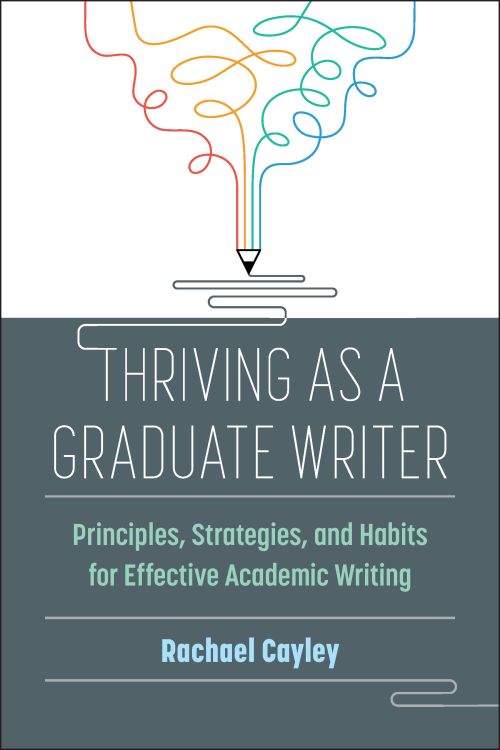Every other week, this space is devoted to a discussion of things (articles, news items, or blog posts) that I have recently found interesting. I choose things that are connected—sometimes closely, sometimes only tangentially—to academic writing. Responding to other people’s ideas allows me to clarify my own thoughts and to draw your attention to other approaches to the issues central to this blog.
Here is something from the Wall Street Journal on the future of punctuation. In this article, Henry Hitchings argues that punctuation usage has never been stable; to my way of thinking, such historical perspective is always more useful than lamentations for a prelapsarian state of linguistic consistency. But what I was particularly interested in was his suggestion that the current trend in punctuation is toward the representation of spoken English. He uses the dash as the ultimate grammatical expression of the way spoken sentences flow into one another. The semicolon, by contrast, isn’t something that we can render in speech: it is entirely an aspect of writing. If you do not regularly use the semicolon, consider whether this has anything to do with the way that you punctuate your sentences according to the patterns of spoken language. (On a related note, here is something fun from The New Yorker’s book blog on the interrobang and other non-standard punctuation marks.)
Here is something from Alexandra Horowitz in the New York Times on the future of the footnote. Horowitz concludes with the following spirited defense of digression: “Surely the purpose of a book is not to present a methodically linear narrative, never wavering from its course, with no superfluous commentary set off by commas. In my mind, footnotes are simply another punctuative style: a subspecies of parenthesis that tells the reader: ‘I’ve got something else here you might like! (Read it later.)’ What better thing? You get to follow the slipstreams in the author’s thinking at your own leisure.” What is fascinating to me is her matter-of-fact tone. She doesn’t appear to think that what she is saying could be considered controversial; instead she throws out the whole idea of linearity with an apparent lack of compunction. A footnote becomes another species of punctuation, another way of indicating that we have things to say that cannot be expected to fit into a linear narrative. Despite my background in academic philosophy—where the footnote is treated with the greatest respect—I was still surprised to hear such a wholehearted abandonment of linearity. (This is an important issue for me since ‘methodically linear’ may very well be what gets written on my tombstone.) Not that I am arguing against the footnote, of course, but I am suggesting that writers have to be responsible for the effect that their interruptions may have on the reader. We all need to develop an awareness of how others may read us in order to make useful decisions about how to interrupt ourselves, be it with parentheses, commas, dashes, or even footnotes.
Lastly, here is something from The Writing Resource blog on the use of ‘try and’; in this post, Erin Brenner gives a good historical and stylistic explanation, concluding that this usage is fine. I found this helpful since I’ve always wondered if the formulation was unacceptably colloquial. The Professor is In blog recently spoke about a related topic, characterizing the use of ‘try’ as an excess of academic caution. That caution, as we all know, is something that can be particularly strong in graduate students. I think there is also a simpler explanation for the use of ‘try’: we use the language of anticipation early in the writing process. When we are drafting a paper, it is easy to write, ‘In this paper, I try to show …’. For most of us, it is harder to write in a first draft, ‘In this paper, I show …’. By the end, however, we have inevitably shown something, even if not exactly the thing we had ‘tried’ to show. We ultimately need to remove the language that indicates an aspirational state of mind. There are places in which the language of ‘trying’ is perfectly accurate, of course, but it is still a good idea to watch for unnecessary uses of this formulation. Since this turn of phrase so often reflects our state of mind as we begin a piece of writing, it can often be removed once we have actually done what we set out to do. By making that change, we offer the reader the most developed version of our prose rather than an earlier, more provisional version.



You make a really good point about “try” being used in early drafts of writing. I’ve seen it happen my own writing as well as in my clients’ writing, and I edit out when it’s anticipatory (I just edited it out of this sentence, in fact). Other words I’ve seen used in this manner include “seems,” “appears,” “possibly,” and other words that hedge what the writer is saying.
Perhaps worth a view in light of what you’ve written. Enjoy!
http://chronicle.com/article/Citation-Obsession-Get-Over/129575/
Thanks, Grant. I thought this reply from Carol Saller was also very interesting: http://chronicle.com/blogs/linguafranca/2011/11/03/citation-obsession-dream-on/.
Pingback: The Writing Resource - Bite-Sized Lessons to Improve Your WritingThe Writing Resource | Bite-Sized Lessons to Improve Your Writing